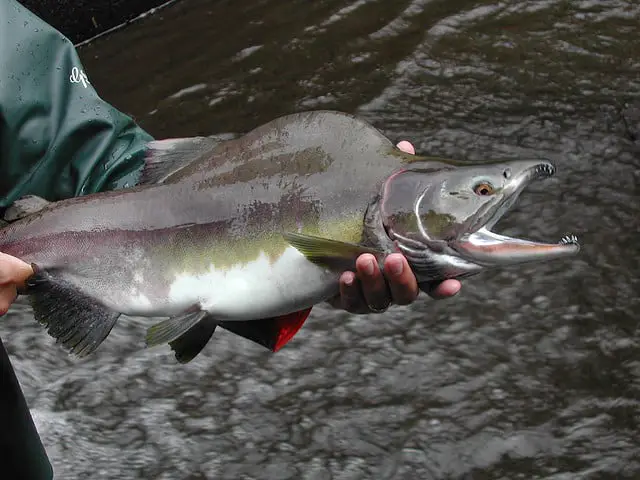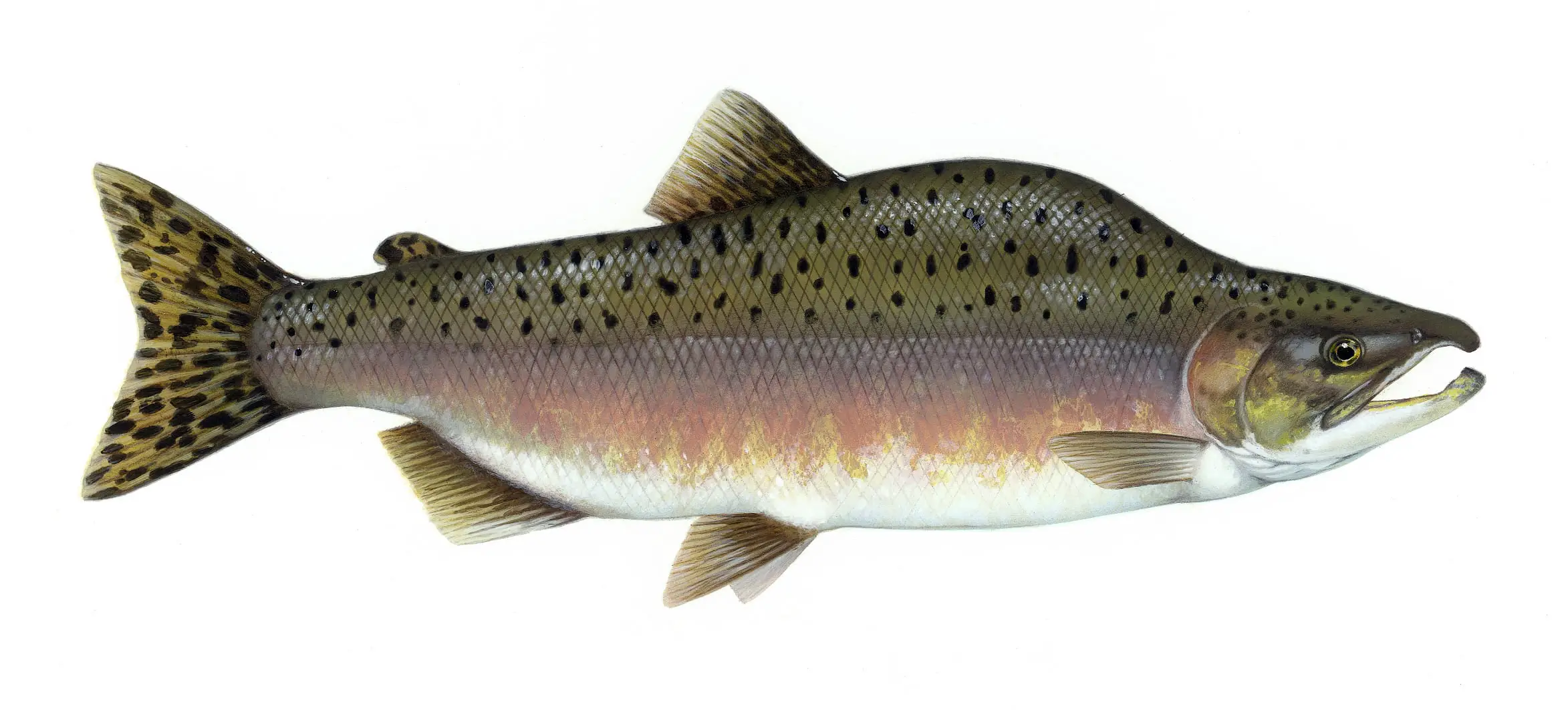Guide to Pink Salmon (Oncorhynchus gorbuscha)
Pink salmon, also called humpback salmon, are the most common breed of Pacific salmon, so if you’re an avid fisherman, you may have caught a few in your lifetime. Here’s a brief overview of everything you might want to know about the pink salmon.
Where They Live
Since pinks thrive in cold temperatures, they tend to swim in northern Pacific and Arctic waters. On the American side, they stay near Canada and Alaska; Northern California is the farthest south they get. On the Asian side, they swim in Siberian and Japanese rivers and coastlines. Landlocked populations have been reported to exist in Nova Scotia and Newfoundland.
Size
Pinks are the smallest variety of salmon, averaging a mere 4.8 pounds and 18 inches long. The world record for heaviest pink salmon is only 15 pounds.
Appearance
“Pink salmon” is a bit of a misnomer. Though their flesh is pink on the inside, their skin is not. As is typical of salmon, they change colors based on whether they’re living in saltwater or freshwater at the time. During their time in the ocean, pink salmon are bright silver with blue-green backs. Once they return to their spawning streams, their color dulls to gray or green. Their mouths are white, rimmed by black gums, and they have large black spots on their backs. During migration back to their home rivers, males develop humps on their backs, hence their alternate name.

Spawning Habits
Pink salmon are the latest species to spawn, and are sometimes referred to as “autumn salmon” or “fall salmon” because their runs extend through mid-October. Coastal rivers are the pinks’ favorite spawning ground. They like to bury their eggs in small gravel. Since they are small and don’t live very long, there’s little point in spending a lot of time swimming all the way up a river, so pinks stay reasonably close to their river’s mouth, spawning in estuaries. Females lay between one thousand and two thousand eggs in their nests.
Life Cycle
After hatching, young pink salmon immediately swim for the ocean. They are the only species of salmon that don’t spend an extended period of time in freshwater before heading to the sea. But they are also the shortest lived salmon, surviving only about two years on average, so they don’t have much time to waste.
Pinks grow to adulthood in saltwater. It takes about 18 months to reach maturity. At this time, which generally happens between June and October, they head back to their birth rivers to lay eggs of their own. Females guard their nests until they die, and males try to fertilize as many eggs as they can before their own death.
Feeding Habits
Young pinks tend to not eat at all until they reach the ocean. When they get there, they feed on aquatic insects, plankton, crustaceans, and squid. They’ll eat other fish when they can find them, but since pinks are small they don’t typically have many options. While pinks are in freshwater, they feed on plankton, larvae, and insects.
Predators
Due to their extremely small size, pink salmon have a hard life. Many young salmon don’t survive past their first few months of life—since they head straight for the ocean, they’re easy targets for larger ocean fish and birds.
Human Consumption
Pink salmon is one of the most common types of salmon consumed by humans. Therefore, it is responsible for a large part of the economy along the northern Pacific coast, especially in Alaska. It’s responsible for the majority of canned salmon, and is also often smoked and salted. The pink salmon is quite nutritious. A ½ fillet serving has only 184 calories, but contains 32 grams of protein and only 5 grams of fat (and it’s healthy fat, rich in Omega acids). The flesh is also an excellent source of B vitamins.
Fun Facts
• Pink salmon flesh gets its color from the small marine crustaceans it eats, including shrimp and krill. If a pink doesn’t eat enough of these, its flesh will often be a pale yellow hue.
• By weight, pink salmon account for the largest salmon harvest in the US.
• Pinks were accidentally brought to Lake Superior, where they reproduced and maintained a presence.

